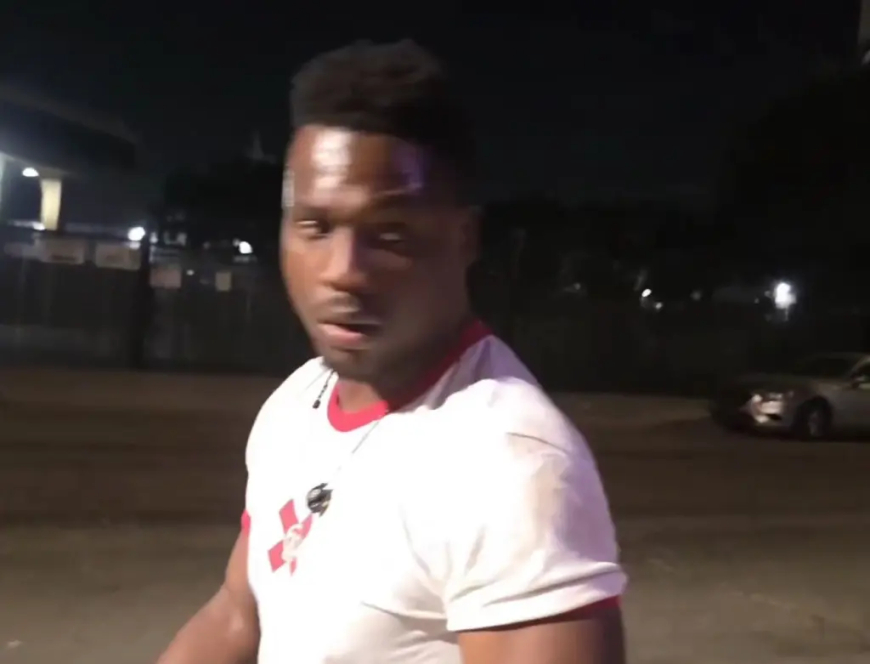Wrestler 'Conscious and Able to Talk' After Beating by Rampage Jackson’s Son: Medical Update and Safety Concerns
A wrestler hospitalized after an altercation with Rampage Jackson’s son is now conscious and talking. Medical insights and safety protocol reviews.

Los Angeles —
The combat sports community was shaken this week after reports emerged that a wrestler was hospitalized following a violent incident involving Raja “Rampage” Jackson Jr., the son of former UFC legend Quinton “Rampage” Jackson. The wrestler, whose name has not yet been officially released, was left unconscious after a brutal encounter but is now reported to be “conscious and able to talk,” according to medical sources.
The incident, which quickly spread across social media platforms, has sparked widespread discussions not only about the altercation itself but also about athlete health, safety protocols, and the responsibilities of sports organizations when dealing with violent conduct outside the competitive arena.
Timeline of the Incident
According to reports first circulated on CNN Sports, the altercation occurred late Saturday evening after a heated exchange escalated into physical violence. Witnesses claim that Raja Jackson struck the wrestler multiple times, leaving him unresponsive until emergency personnel arrived at the scene.
Medical responders transported the athlete to a nearby hospital, where he underwent emergency evaluations. By Sunday morning, officials confirmed that he had regained consciousness and was able to communicate with both medical staff and his family.
The Jackson family has not yet issued a formal statement, though sources close to them suggest that lawyers are reviewing the circumstances surrounding the altercation.
Medical Insights: From Trauma to Recovery
Sports medicine specialists emphasize that recovery from blunt force trauma, such as head and facial injuries, depends heavily on the severity of impact, timely intervention, and ongoing neurological assessments.
Dr. Lisa Moreno, a physician who specializes in sports-related trauma, explained that while regaining consciousness is a positive sign, “patients in these scenarios often require multiple follow-up scans to rule out long-term neurological complications such as concussions, internal bleeding, or post-traumatic syndromes.”
Hospital officials have indicated that the wrestler remains under observation but is stable. He is expected to undergo a comprehensive neurological review in the coming days.
Safety Protocols Under Review
This incident has reignited debate about athlete welfare and the responsibilities of combat sports organizations when athletes—both professional and amateur—are involved in violent altercations outside official competition.
While most major promotions, including the UFC and Bellator, enforce codes of conduct for athletes under contract, the challenge remains how to apply these standards to family members of retired fighters or individuals connected to the combat sports community.
According to ESPN’s combat sports coverage, there is growing pressure on athletic commissions to expand safety awareness and disciplinary measures to prevent similar incidents. Sports safety advocates argue that combat athletes, and those closely tied to the sport, often carry reputational influence that can escalate disputes.
“Fighting outside the regulated environment of the ring or cage is not only dangerous but also undermines public confidence in the sport,” said a spokesperson for the National Athletic Safety Alliance.
Reactions from the Combat Sports World
The incident has drawn reactions from fighters, coaches, and fans worldwide. Some prominent fighters expressed concern for the injured wrestler while also highlighting the need for stricter intervention programs to prevent violence outside sanctioned competitions.
Fans on social media expressed both outrage and relief, with many emphasizing that the athlete’s survival and ability to communicate was the most important update. Others criticized what they see as a culture of aggression surrounding combat sports figures, particularly when altercations spill into public life.
The Road to Recovery
As of Monday morning, medical staff remain cautiously optimistic about the wrestler’s recovery. While he is out of immediate danger, long-term rehabilitation may be necessary depending on neurological test results. Physicians will closely monitor signs of concussion, vision impairment, and potential speech or motor issues that can arise days or even weeks after such trauma.
The athlete’s family has requested privacy but confirmed their gratitude for the swift actions of first responders and hospital staff.
Conclusion
The beating involving Rampage Jackson’s son has once again spotlighted the darker edges of combat sports culture, raising urgent questions about medical readiness, athlete safety, and responsibility beyond the ring.
With the wrestler now conscious and talking, attention will likely shift to his rehabilitation, potential legal consequences for Raja Jackson Jr., and whether governing bodies will step in to reassess safety protocols for athletes and affiliates in the combat sports community.














